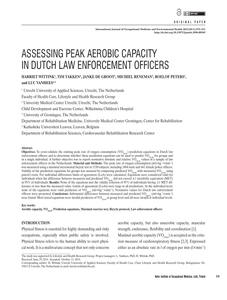MULTIFILE
DOCUMENT
The growing sophistication, frequency and severity of cyberattacks targeting all sectors highlight their inevitability and the impossibility of completely protecting the integrity of critical computer systems. In this context, cyber-resilience offers an attractive alternative to the existing cybersecurity paradigm. We define cyber-resilience as the capacity to withstand, recover from and adapt to the external shocks caused by cyber-risks. This article seeks to provide a broader organizational understanding of cyber-resilience and the tensions associated with its implementation. We apply Weick's (1995) sensemaking framework to examine four foundational tensions of cyber-resilience: a definitional tension, an environmental tension, an internal tension, and a regulatory tension. We then document how these tensions are embedded in cyber-resilience practices at the preparatory, response and adaptive stages. We rely on qualitative data from a sample of 58 cybersecurity professionals to uncover these tensions and how they reverberate across cyber-resilience practices.
DOCUMENT

In recent years, a step change has been seen in the rate of adoption of Industry 4.0 technologies by manufacturers and industrial organizations alike. This article discusses the current state of the art in the adoption of Industry 4.0 technologies within the construction industry. Increasing complexity in onsite construction projects coupled with the need for higher productivity is leading to increased interest in the potential use of Industry 4.0 technologies. This article discusses the relevance of the following key Industry 4.0 technologies to construction: data analytics and artificial intelligence, robotics and automation, building information management, sensors and wearables, digital twin, and industrial connectivity. Industrial connectivity is a key aspect as it ensures that all Industry 4.0 technologies are interconnected allowing the full benefits to be realized. This article also presents a research agenda for the adoption of Industry 4.0 technologies within the construction sector, a three-phase use of intelligent assets from the point of manufacture up to after build, and a four-staged R&D process for the implementation of smart wearables in a digital enhanced construction site.
DOCUMENT

"The World of the [open] innovator" described the background of the revolution we are in in innovation and what the consequences are for innovation, changing towards design driven open innovation. We reframed innovation to meet new needs and values of companies and organizations in our work field. We do not take this light-hearted. We know the field of innovation and used our experience and conversation with stakeholders to come up with the insight of The [open] Innovator. What strengthened us were reactions from companies and organization we asked to cocreate or participate. There seemed to be an instant recognition and appeal to our vision and approach. But we also realize that we are in the stage of prototyping and we need you, as our lead users to be critical, yet to trust us. You, being an [open] innovator, will do great wonders, because you will be taught to deal with this uncertainty and dig in new, unknown situations or problems. You will learn the tools for research, for communication, for visualization. You will become a cooperative, open-minded problem solver. You will be able - with all the skills and tools we will provide you - to make the difference. But we need you to reflect upon your progress and needs; help us to get an insight in to your uncertainties, values and unmet needs, to enable us to improve our thinking and teaching. However, innovation can only be learned by doing! Start cracking, start experimenting, start having fun. Welcome to the future, that has just started.
DOCUMENT
![The World of the [open] innovator](https://publinova-harvester-content-prod.s3.amazonaws.com/thumbnails/files/previews/pdf/20250506150122198446.042ed686-762c-429d-ba80-1c82380cb051-thumbnail-400x300.png)
Objectives: To cross-validate the existing peak rate of oxygen consumption (VO2peak) prediction equations in Dutch law enforcement officers and to determine whether these prediction equations can be used to predict VO2peak for groups and in a single individual. A further objective was to report normative absolute and relative VO2peak values of a sample of law enforcement officers in the Netherlands. Material and Methods: The peak rate of oxygen consumption (ml×kg–1×min–1) was measured using a maximal incremental bicycle test in 1530 subjects, including 1068 male and 461 female police officers. Validity of the prediction equations for groups was assessed by comparing predicted VO2peak with measured VO2peak using paired t-tests. For individual differences limits of agreement (LoA) were calculated. Equations were considered valid for individuals when the difference between measured and predicted VO2peak did not exceed ±1 metabolic equivalent (MET) in 95% of individuals. Results: None of the equations met the validity criterion of 95% of individuals having ±1 MET difference or less than the measured value. Limits of agreement (LoAs) were large in all predictions. At the individual level, none of the equations were valid predictors of VO2peak (ml×kg–1×min–1). Normative values for Dutch law enforcement officers were presented. Conclusions: Substantial differences between measured and predicted VO2peak (ml×kg–1×min–1) were found. Most tested equations were invalid predictors of VO2peak at group level and all were invalid at individual levels.
DOCUMENT
